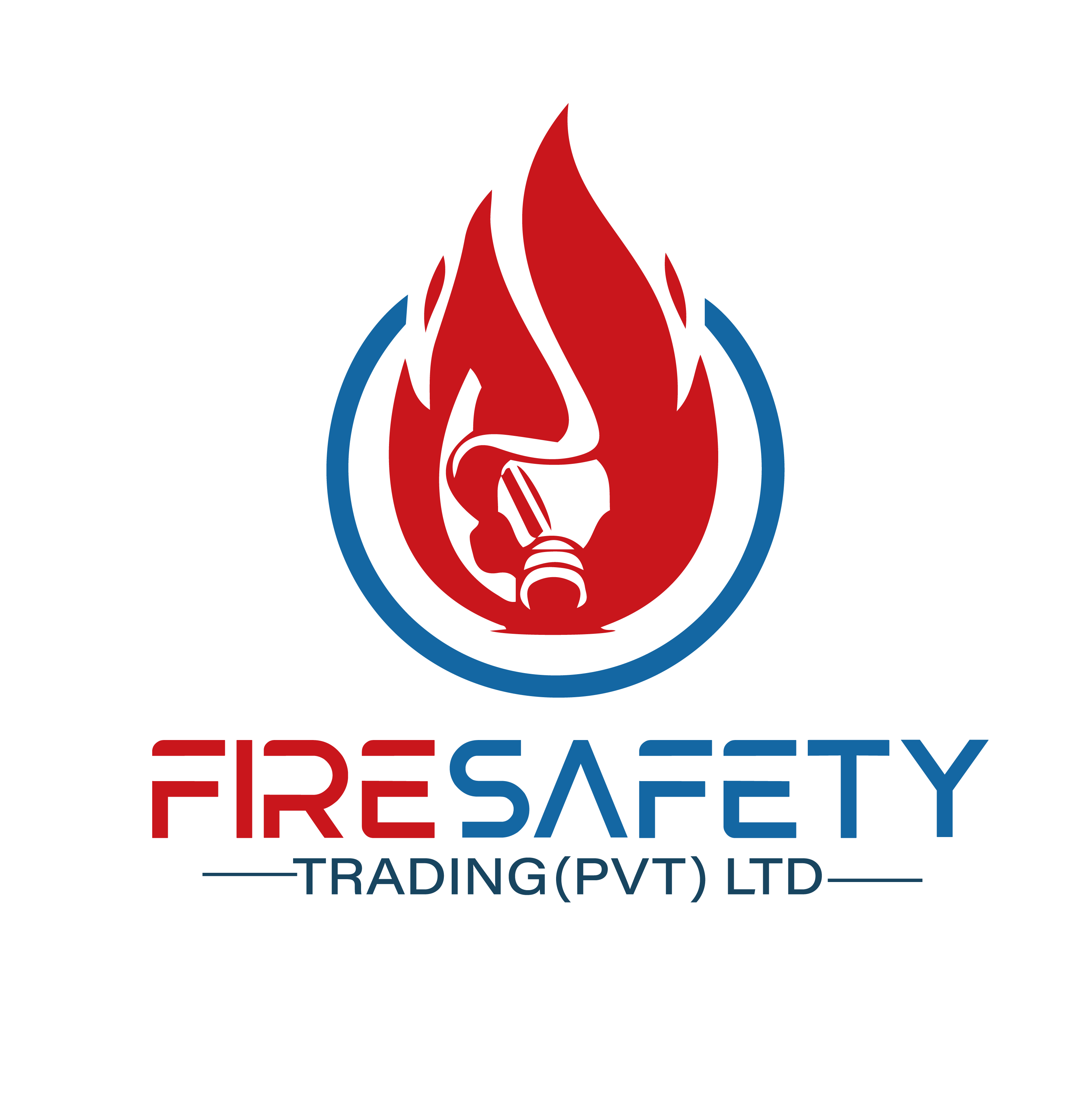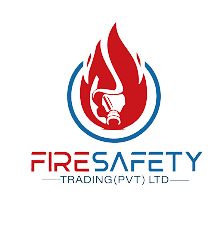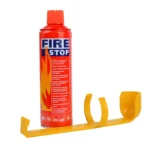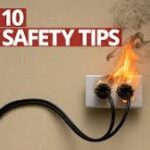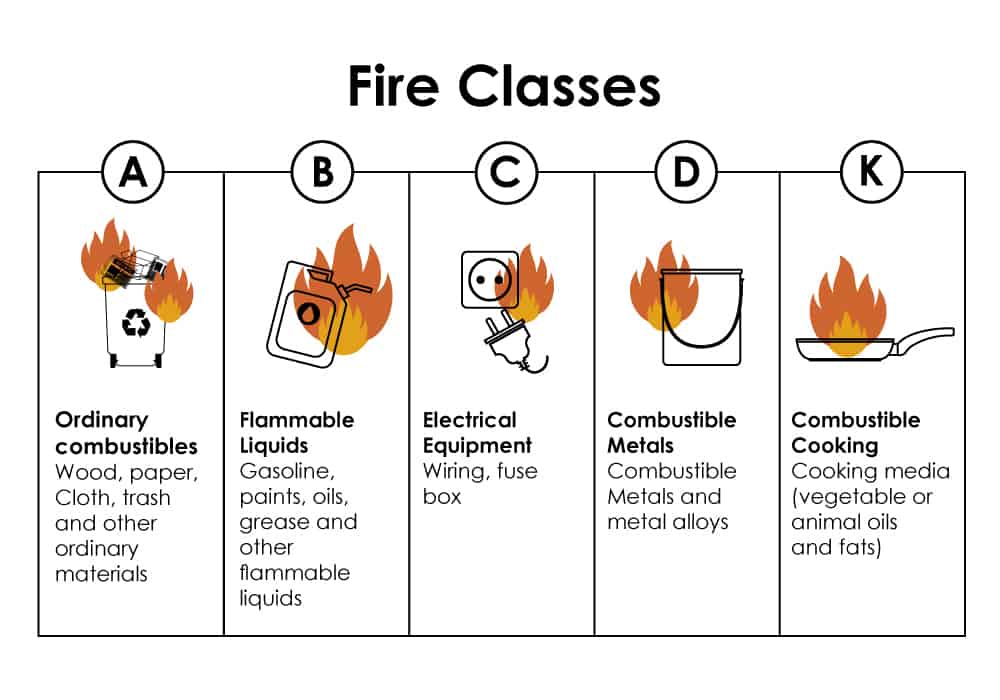Fire is one of the oldest tools of human civilization, but when it gets out of control, it quickly turns into a major hazard. Across Pakistan, especially in growing cities like Islamabad, fires in homes, offices, and industries are a serious risk. Knowing the types of fire is not just about theory—it directly affects how we protect ourselves, what kind of fire safety equipment we install, and how quickly we can respond when danger strikes.
In this article, we will explore the main categories of fire, why each type matters, and what equipment is suitable for dealing with them. By the end, you will have a clear understanding of fire classes and how businesses and households in Pakistan can stay prepared.
Why Understanding Fire Types Matters
Not every fire is the same. Some are caused by ordinary materials like wood and paper, while others come from flammable liquids, electrical faults, or even cooking oils. If you use the wrong method or wrong extinguisher, you can actually make the fire worse.
This is why international safety standards classify fire into different types (or classes). These classifications are now widely used in Pakistan, especially in offices, shopping malls, factories, and residential apartments in Islamabad.
The connection between fire safety equipment and fire types is very close: you must match the right extinguisher or system to the correct class of fire.
The Main Types of Fire
Here are the internationally recognized types of fire. Each has its own risks and requires specific methods to control.
1. Class A Fires – Ordinary Combustibles
These fires involve everyday materials such as:
-
Wood
-
Paper
-
Cloth
-
Rubber
-
Plastics
They are the most common type, often starting from small negligence like leaving a cigarette lit, improper wiring touching curtains, or sparks from machinery.
How to handle:
Class A fires can be put out with water-based extinguishers or multipurpose dry chemical extinguishers. In offices, schools, and homes across Islamabad, these extinguishers are considered essential fire safety equipment.
2. Class B Fires – Flammable Liquids
These fires involve liquids and gases such as:
-
Petrol
-
Diesel
-
Kerosene
-
Paints
-
LPG
Pakistan’s fuel stations, industrial plants, and even small workshops are highly vulnerable to Class B fires. Unlike Class A fires, pouring water here is dangerous—it spreads the liquid, making the fire worse.
How to handle:
Foam extinguishers, CO₂ extinguishers, and dry chemical powder extinguishers are effective against these fires. Many commercial centers in Islamabad now install these as part of their fire fighting equipment list.
3. Class C Fires – Flammable Gases
These fires are caused by gases like propane, butane, or natural gas leaks. In Pakistan, where gas connections are common in homes and industries, Class C fires are a frequent risk.
How to handle:
CO₂ extinguishers or dry chemical powder extinguishers are best for controlling them. Safety experts also stress the importance of cutting off the gas supply immediately.
4. Class D Fires – Combustible Metals
Less common but highly dangerous, these fires occur with metals such as:
-
Magnesium
-
Titanium
-
Sodium
-
Potassium
These types are mostly a risk in industrial or laboratory environments in Pakistan. For example, a workshop in Islamabad dealing with metal parts might face this challenge.
How to handle:
Specialized dry powder extinguishers are required. Regular water or foam will not work and may even intensify the fire.
5. Class E Fires – Electrical Fires
Although some standards combine this with Class C, in many countries—including Pakistan—it is treated as a separate category. Electrical fires come from short circuits, faulty wiring, overloaded sockets, or malfunctioning equipment.
How to handle:
Water is extremely dangerous here. Instead, CO₂ extinguishers and dry powder extinguishers are recommended. Almost every office in Islamabad should have this type of fire safety equipment.
6. Class F (or K) Fires – Cooking Oils and Fats
These fires happen in kitchens, caused by overheated cooking oils or fats. They are extremely intense and spread quickly. In Pakistan, restaurant kitchens, fast food outlets, and even home kitchens face this danger.
How to handle:
Wet chemical extinguishers are designed for these fires. They cool the oil and create a barrier to prevent re-ignition. In Islamabad’s growing food sector, these are critical safety tools.
Fire Safety Equipment and Its Role
Identifying fire classes is only the first step. The real protection comes from installing the correct fire safety equipment in the right place. Here are some examples:
-
Fire Extinguishers – Different types for Class A, B, C, D, E, and F fires.
-
Fire Alarm Systems – Early warning to evacuate and call for help.
-
Fire Hose Reels and Hydrants – For larger areas like factories or malls.
-
Emergency Lighting and Signage – Guides people safely during evacuation.
In Islamabad, authorities now require many commercial buildings to have approved fire fighting equipment installed as part of compliance and licensing.
Local Relevance: Fire Safety in Islamabad
Islamabad is known for its organized planning, but as the city expands, fire hazards are becoming more common. From high-rise offices in Blue Area to residential apartments in Bahria Town, fire risks vary, and so should the safety solutions.
Businesses and homeowners are turning to companies like Fire Safety Trading, which provide certified fire safety equipment suitable for all fire types. Whether you are running a school, a corporate office, or a restaurant, the right choice of equipment can save lives and property.
Training and Awareness
Having the right tools is not enough—people must know how to use them. In Pakistan, many incidents show that untrained staff panic during fire emergencies. Simple training sessions on how to recognize fire types and operate extinguishers can make a big difference.
Conclusion
So, how many types of fire are there? The answer is six main classes: A, B, C, D, E, and F. Each type comes from different materials and requires specific handling methods.
For Islamabad and Pakistan as a whole, the lesson is clear: fire safety is not optional. It requires a combination of the correct fire safety equipment, professional installation, and public awareness.
By identifying fire types and preparing with the right tools, we can reduce risks, protect lives, and safeguard businesses. Whether you manage a small shop or a large industrial plant, investing in proper fire safety is an investment in security and peace of mind.
